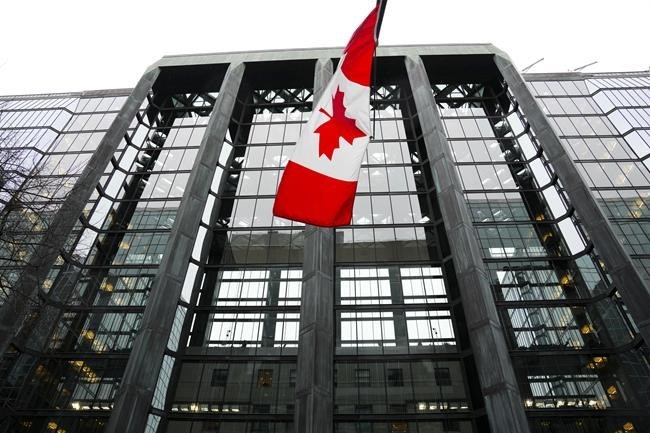OTTAWA — The Bank of Canada ended the year with another interest rate hold as the economy slows and forecasters speculate on the timing of rate cuts in 2024.
The central bank announced its decision to keep its key interest rate steady at five per cent Wednesday, encouraged by evidence that higher rates are helping bring inflation down.
“Higher interest rates are clearly restraining spending: consumption growth in the last two quarters was close to zero, and business investment has been volatile but essentially flat over the past year,” the central bank said in a statement detailing its final decision of the year.
The combination of weaker growth and a cooling job market suggests demand is no longer outpacing supply in the economy, the central bank added.
This slowdown, the Bank of Canada has argued, is necessary to restore price stability.
The decision Wednesday carried few surprises as it marked the third consecutive time the Bank of Canada has opted to keep its key rate unchanged.
But as financial markets place their bets on when the central bank may start cutting rates — and Canadians eagerly await that turning point — the central bank is giving no hints on when that may happen.
Instead, it's still keeping the door to more rate hikes ajar.
“Governing council is still concerned about risks to the outlook for inflation and remains prepared to raise the policy rate further if needed,” the central bank said, noting it wants to see underlying price pressures ease further.
But economists and market watchers don't buy that more rate hikes are really on the table.
"They're still trying to talk tough. They're trying to tell people that it's not a slam dunk that ...they're going to be cutting interest rates," said BMO chief economist Douglas Porter. "But very few people are listening to them anymore."
The central bank will have to switch to cutting interest rates soon enough, TD director of economics James Orlando said, as the unemployment rate continues to rise and spending in the economy takes a hit. But for now, it makes sense for the central bank to keep its guard up.
"A hold today was the only option for the BoC," wrote Orlando in a note to clients. "But with inflation still above three per cent, we get why the BoC isn't ready to declare victory."
Inflation has eased considerably over the last year, reaching 3.1 per cent in October. But economists are mindful that inflation has been somewhat volatile lately, and more evidence is needed that underlying price pressures are easing.
While financial markets are predicting rate cuts to start as early as the first quarter of next year, some commercial banks are taking a more cautious approach.
RBC, for example, expects the Bank of Canada to start cutting interest rates in the second half of next year.
"Our view is that they're only going to start sort of cutting in this second half of 2024, once (it) become more obvious that inflation is truly going to return back to target and stay there," said economist Claire Fan.
The Bank of Canada's next rate decision, along with its updated economic forecasts, is set for Jan. 24.
A key factor that will drive the central bank's decision on when to cut interest rates will be how the economy slows in the coming months.
Weighed down by higher borrowing costs, the Canadian economy has struggled to consistently grow this year. The most recent GDP report showed the economy contracted by 1.1 per cent on an annualized basis in the third quarter.
The labour market has also lost much of its steam as the unemployment rate creeps higher, reaching 5.8 per cent.
These trends are expected to continue.
Porter says the Canadian economy has not yet fully absorbed the Bank of Canada's hefty rate hikes, suggesting a sluggish year is ahead.
"The economy is still trying to digest those rate hikes that we've had in the last two years," Porter said.
"Our official view is for GDP to rise 0.5 per cent next year, which is extremely slow. It maybe doesn't quite rise to the level of the definition of recession, but it's going to feel pretty sluggish."
This report by The Canadian Press was first published Dec. 6, 2023.
Nojoud Al Mallees, The Canadian Press




